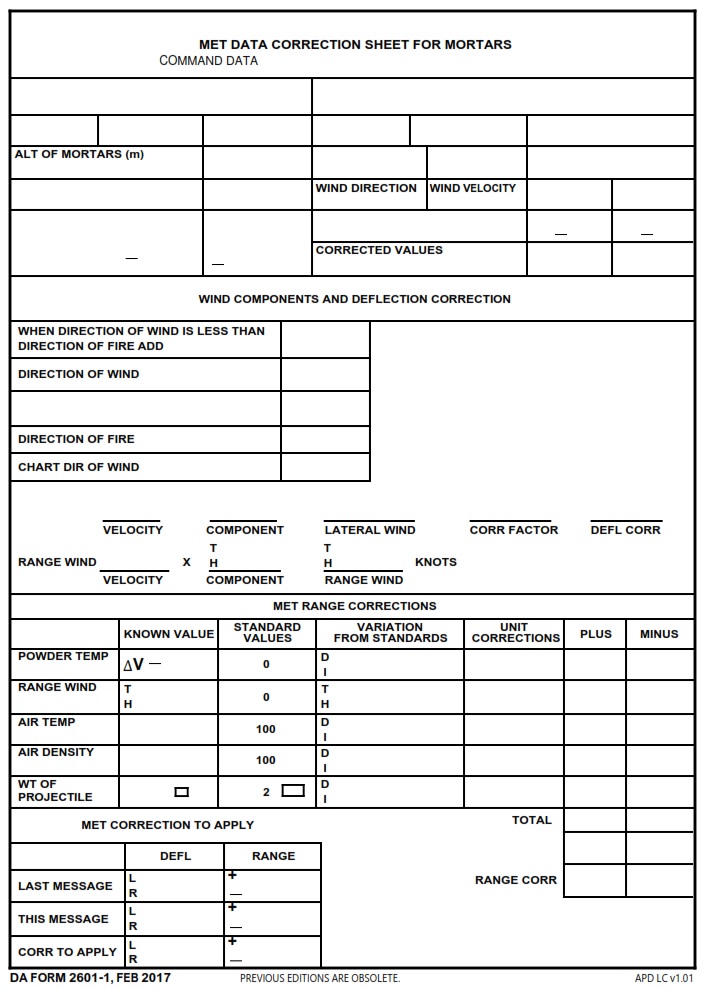DAFORMS.NET – DA FORM 2601-1 – Met Data Correction Sheet For Mortars – Mortars are an essential part of the artillery arsenal and require precise data to ensure accurate fire missions. The U.S. Army has created the DA Form 2601-1 Met Data Correction Sheet To ensure that all data is correct and reliable. This article will provide an overview of this form, including its purpose and how it should be used correctly. It will also discuss why accuracy is so important when using mortars in a military environment.
Download DA FORM 2601-1 – Met Data Correction Sheet For Mortars
| Form Number | DA FORM 2601-1 |
| Form Title | Met Data Correction Sheet For Mortars |
| Published | 02/01/2017 |
| Prescribing Pub | – |
| File Size | 28 KB |
DA FORM 2601-1 (9193 downloads )
What is a DA FORM 2601-1?
Mortars are an essential part of military operations, used by troops in the field to provide support and defense. To accurately record and track data on mortar use, the Department of the Army has developed a form known as DA Form 2601-1 – Met Data Correction Sheet For Mortars. This form serves as a critical tool for commanders to monitor mortar activity, allowing them to make quick corrections and adjustments when necessary.
Where Can I Find a DA FORM 2601-1?
From being able to accurately predict the trajectory of a mortar round to ensuring that shelling reaches its target, accurate data and calculations are essential for successful mortar operations. The DA Form 2601-1, or Met Data Correction Sheet for Mortars, is an important tool used by military personnel to ensure accuracy in their calculations. This form is designed to help correct firing data from meteorological events such as wind, temperature, and barometric pressure.
DA FORM 2601-1 – Met Data Correction Sheet For Mortars
Mortar fire control is an essential component of any successful military operation, and accuracy is key. The DA FORM 2601-1 Met Data Correction Sheet provides Soldiers a comprehensive and accessible means to record any necessary corrections related to the data associated with mortar firing operations. It helps to ensure that critical information is accurately documented in order to improve accuracy and reduce risk.
